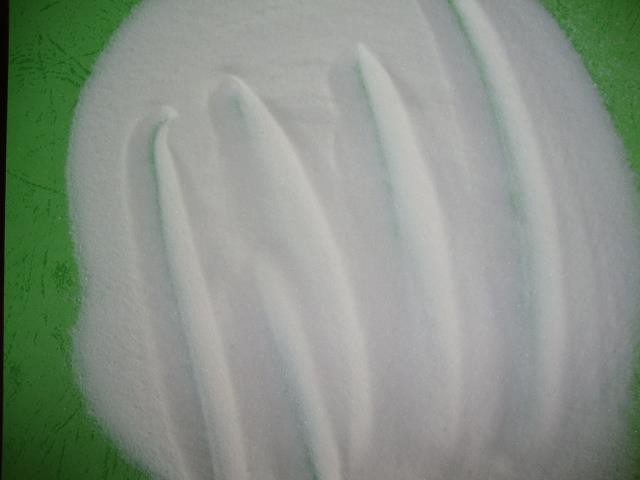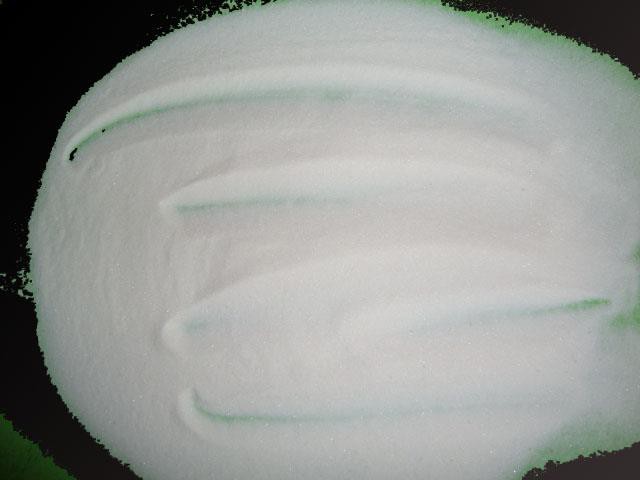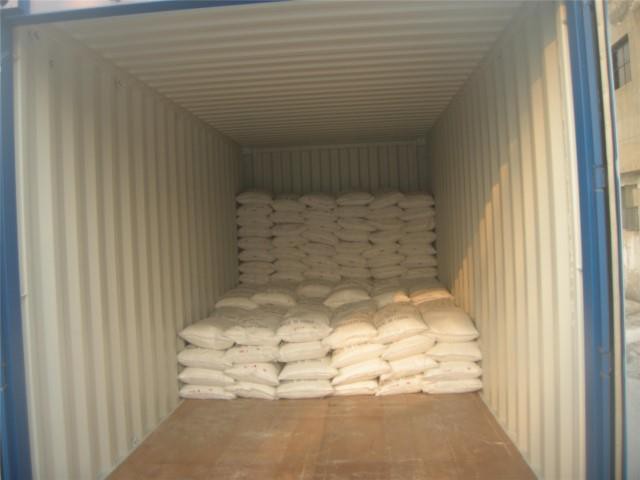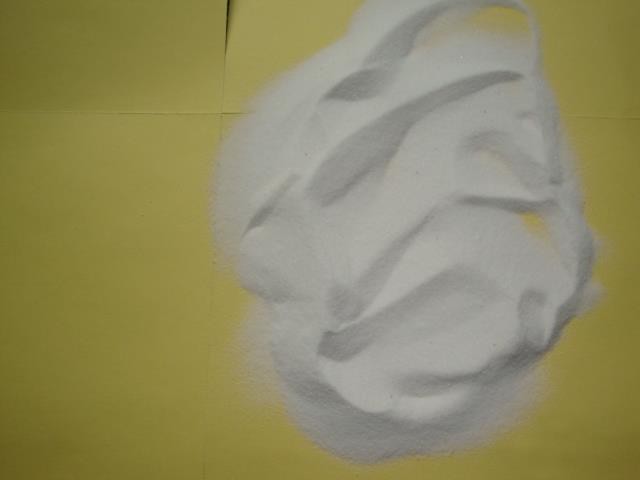RUIBAO: Your Professional Bisphenol A Supplier
Experienced Factory
ZIBO RUIBAO CHEMICAL CO., LTD was founded in 1998 and has 20+ years experience in producing calcium formate and sodium formate. We also have 15 years of exporting experience and can provide professional products to our customers.
Production Capacity
Our main products are calcium formate, sodium formate, sodium acetate, calcium chloride, potassium formate, etc. The annual production of calcium formate is 15,000 tons, the annual output of sodium formate is 25,000 tons, the annual output of sodium acetate is 10,000 tons, and the number of production and sales are the top in our country.
Our Certificate
The company has passed the ISO9001 quality system certification, FAMI - QS certification, and SGS certification. RUIBAO is the first company in China to obtain a production license for calcium formate feed additives.
After-sales Service
We have one group of professional sales who can provide the pre-sales and after-sales support for our customers. Your questions or problems can be responded to quickly.
-
1. Melts ice and snow faster than urea and sodium acetate. 2. Effective at lower temperatures (00
Add to Inquiry -
Snow-melting agent often referred to as de-icer or anti-icer, is a chemical substance or mixture
Add to Inquiry -
Sodium Formate Granule for Ariport
Characteristics of sodium formate solid snow melting agent:. 1. High efficiency and durability of
Add to Inquiry -
Sodium formate granules is a kind of anti-icer.It is a new kind of Eco-friendly snow melter based
Add to Inquiry -
Advantages: Our snow-melting agent is a kind of Eco-environmental agent for deicing of airport
Add to Inquiry -
Environmentally friendly deicing salt is widely used in snow & ice melting, It can save energy
Add to Inquiry -
This solid granulated Sodium Formate is used as a non-corrosive agent at airports for deicing of
Add to Inquiry
Deicer refers to a substance that is used to melt ice and snow from roads, sidewalks, and other surfaces. It works by lowering the freezing point of water, which helps to break up the ice and make it easier to remove. Different types of deicers are available, including salt (sodium chloride), calcium chloride, magnesium chloride, and potassium acetate. Each type of deicer has its own advantages and disadvantages and is used in different situations depending on the weather conditions, surface type, and environmental concerns.

Common Types of Deicer

Calcium Chloride
Calcium Chloride is one of the most popular ice melt products, in addition to Magnesium Chloride. Calcium Chloride is a hygroscopic salt that absorbs moisture from the air and lowers the freezing point of water to prevent ice build-up. Calcium Chloride products have the highest concentration of chlorides, making them the most effective products to maximize the effectiveness of your ice melt solution. There are many different forms of Calcium Chloride products available, with the most popular being pellets and flakes.

Magnesium Chloride
Magnesium Chloride is the other most popular ice melt product and is very similar to Calcium Chloride. Magnesium Chloride also utilizes its hygroscopic properties to absorb moisture from the air and lower the freezing temperature of water to minimize ice. Magnesium Chloride products are not as concentrated as Calcium Chloride, meaning slightly more product is needed upon application. With this being said, Magnesium Chloride is the more environmentally friendly of the two products and does not irritate the paws of animals that come into contact with a treated surface. Additionally, Magnesium Chloride is less harmful to surrounding vegetation and plant life. Magnesium Chloride products are also available in both pellet and flake form, with similar distinctions.

Rock Salt
Rock Salt is the most widely known and utilized product due to its convenience and affordability. Rock Salt is readily available and most often found in bulk. This deicer is so affordable because it contains almost 100% sodium chloride. While it is affordable, it can be very damaging to concrete and pavement upon application. Rock Salt is only recommended for road surfaces that are already damaged or can withstand corrosion and damage. Rock Salt loses its effectiveness in temperatures colder than 15°F, meaning it is not the best choice for climates that experience colder weather consistently. Rock Salt is most often white in color and can be a good low-cost alternative for an ice melt that comes in large quantities and can be applied quickly.

Calcium Magnesium Acetate
Calcium Magnesium Acetate (CMA) deicer is granulated calcium magnesium acetate, formulated from dolomitic lime and acetic acid. This product is approved by the Federal Highway Administration to melt ice effectively. Calcium Magnesium Acetate is safer on pavement and concrete and does not leave any damage after melting ice. Additionally, this product is less corrosive and toxic towards the environment, making it more eco-friendly compared to competitors such as Rock Salt. Calcium Magnesium Acetate should be applied to the pavement once a storm starts for maximum effectiveness. It only functions in temperatures above 15°F.
The Chemistry of Deicing: Deicing Chemicals
All chemical deicers share a common working mechanism: they chemically prevent water molecules from binding above a certain temperature that depends on the concentration. This temperature is below 0 °C, the freezing point of pure water (freezing point depression). Sometimes, there is an exothermic dissolution reaction that allows for an even stronger melting power. The following lists contains the most-commonly used deicing chemicals and their typical chemical formula.
Salts:
1)Sodium chloride (NaCl or table salt; the most common deicing chemical)
2)Magnesium chloride (MgCl2, often added to salt to lower its working temperature)
3)Calcium chloride (CaCl2, often added to salt to lower its working temperature, attacks concrete)
4)Potassium chloride (KCl)
5)Calcium magnesium acetate (CaMg2(CH3COO)6)
6)Potassium acetate (CH3COOK)
7)Potassium formate (CHO2K)
8)Sodium formate (HCOONa)
9)Calcium formate (Ca(HCOO)2)

Organics:
1)Urea (CO(NH2)2), a common fertilizer
2)Agricultural by-products, generally used as additives to sodium chloride
3)Methanol (CH4O), scarcely used on roads
4)Ethylene glycol (C2H6O2), scarcely used on roads
5)Propylene glycol (C3H8O2), scarcely used on roads
6)Glycerol (C3H8O3), scarcely used on roads

The Dangers of Sodium Chloride Ice Melters
Whether the product is pure sodium chloride rock salt or the NaCl is an ingredient in an ice melt blend, there are serious risks to using it.
Sodium Chloride Acts Slowly, So Surfaces Remain Dangerously Slick
Perhaps waiting for rock salt to melt ice is just an inconvenience that will make you late for work or getting the kids to school. However, people often spread the salt and expect that the icy ground is now safe to walk upon. They don’t wait for the salt to work, step onto the icy surface, slip and fall. US CDC statistics show that up to 30 percent of falls on ice results in broken bones, concussion or death. Falling is the leading cause of injury-related death in older Americans. Veterinarians report tens of thousands of similar injuries to dogs that slip on the ice.
Sodium Chloride Doesn’t Work in Extreme Cold
As temperatures drop, rock salt gets less and less effective. At about 10 degrees Fahrenheit, it stops melting ice. Salt that isn’t melting the ice gives a false sense of security, often resulting in serious slip-and-fall injuries.
Rock Salt Rolls from Underfoot
Have you ever lost your footing on gravel when it slid? Rock salt’s structure is very similar, and if the salt hasn’t melted into the ice, it is as unsafe as walking on loose gravel.
Sodium Chloride Is Poisonous
Even a little bit of NaCl can harm a child, a pet or wildlife when in rock salt or ice melt form. One reason is that ice melt products aren’t made to the same safety level as table salt and often contains harmful impurities. Illinois Poison Control urges parents to call the center if children even “sample” sodium chloride rock salt or similar ice melt product. When unattended children “sample” rock salt, they like the taste and ingest more. Pets and wildlife like the taste too and can be poisoned. In addition, rock salt ice melt causes irritation and burns to the eyes, skin or paws, mouth, throat and digestive tract
Calcium Chloride vs. Sodium Chloride: The Key Differences
|
Factors |
Calcium Chloride |
Sodium Chloride |
|
What is it? |
Calcium chloride is an inorganic salt made up of calcium and chlorine atoms. It commonly exists as white salt crystals composed of ionic bonds between positively charged calcium ions and negatively charged chloride ions. When dissolved in water, calcium chloride breaks into its calcium and chloride ions. It has many industrial uses including road de-icing and dust control due to its ability to attract moisture. |
Sodium chloride, also known as table salt or rock salt, is an ionic compound made up of electrically charged sodium and chloride ions bonded together. The chemical formula for pure sodium chloride is NaCl, representing one sodium atom bonded to one chlorine atom to form a neutral molecule. |
|
Cost |
More expensive than rock salt |
It is very affordable and budget-friendly |
|
Application |
Calcium chloride works in very cold temperatures down to -25°F, making it ideal for ice melting in frigid conditions. |
Sodium chloride works adequately for ice melting down to about 15°F, but loses effectiveness in colder temperatures. |
|
Easiness |
Though not as readily available as rock salt, calcium chloride is still fairly accessible and easy to apply for ice melting needs. |
Sodium chloride in rock salt form is readily available and easy to apply manually for ice melting needs. |
|
Effectiveness |
It provides rapid, effective ice melting through an exothermic reaction, though over-application can leave slippery residues. |
Requires frequent reapplication for thorough ice melting on surfaces. |
|
Vehicle Safety |
Calcium chloride is less corrosive to auto finishes and metals compared to sodium. chloride salt alternatives. |
Can be corrosive to auto finishes and metals with prolonged exposure during ice melting. |
|
Concrete Safety |
It is less damaging to concrete surfaces than sodium chloride |
Can damage concrete surfaces more extensively. |
|
Landscape Safety |
Though safer than sodium chloride, calcium chloride can still damage plants and grass if used excessively. |
Overuse of sodium chloride can be harmful to nearby plants, grass, and paws. |

Are you looking for a deicer product to use instead of calcium chloride or urea? Solid sodium formate is used as a non-corrosive agent at airports for de-icing of runways in mix with corrosion inhibitors and other additives, which rapidly penetrate solid snow and ice layers, detach them from the asphalt or concrete and melt the ice rapidly. Sodium formate was also used as a road deicer in the city of Ottawa from 1987 to 1988. Why we use it for de-icing
Effectiveness
Sodium formate is highly effective at melting ice and snow. It has a low freezing point, which helps to prevent further ice formation by lowering the melting point of water. This property makes it suitable for de-icing roads, walkways, and other surfaces.
Rapid Action
Sodium formate has a fast-acting nature, allowing it to quickly dissolve ice and snow upon application. It generates heat when it comes into contact with water, facilitating the melting process and providing instant relief from icy conditions.
Environmentally Friendly
Sodium formate has a relatively low environmental impact compared to other de-icing agents. It is biodegradable and does not persist in the environment for extended periods. Additionally, it has a low toxicity level, making it safe for plants, animals, and groundwater.
Corrosion Prevention
Sodium formate helps to prevent corrosion of metal surfaces, such as bridges and vehicles, that may come into contact with de-icing solutions. It forms a protective layer, minimizing the corrosive effects of ice-melting chemicals.
Compatibility
Sodium formate is compatible with other de-icing agents, including calcium chloride and magnesium chloride. It can be blended with these substances to enhance their effectiveness or to create customized de-icing solutions suitable for specific temperature ranges.
How Does Sodium Formate Work As a Deicer Or Snow Melting Agent
Sodium formate is a premier snow-melting agent due to its distinctive chemical properties and reaction mechanisms. When applied to icy surfaces, it undergoes a series of interactions contributing to its exceptional efficacy in snow and ice removal.

Freezing Point Depression
Sodium formate lowers the freezing point of water through a process known as “freezing point depression.” This mechanism prevents ice from refreezing. It is ensuring adequate snow and ice removal even in temperatures below 0°F.

Brine Formation
Sodium formate generates a brine solution on the surface upon interaction with ice and snow. This solution boasts a lower freezing point than water. Providing an extra barrier against ice reformation.

Homogeneous Distribution
With its refined granular nature, sodium formate is uniformly distributed over the surface. It ensures that the snow-melting agent comes into contact with the entire surface. Maximizing its effectiveness in combating ice and snow.
How to Find the Most Appropriate Thawing Agent for Deicing
Selecting the right thawing agent depends on the factors listed below:
Melting Capacity
Compare with 12 kg of ice per kilogram of pure sodium chloride at a -5 °C temperature.
Usability
What is the freezing-point reducing effect and up to which temperature is the thawing agent effective?
Availability
Is the thawing agent directly available in sufficiently large quantities? Can the agent easily be stored in large amounts for several years on end?
Substrate
The substrate that needs to be deiced: Is it susceptible to corrosion?
Health and Safety
Will you need to put in place radical health and safety measures?
Environmental Health
Does the deicing agent harm the environment? Do not forget that thawing agents are usually used on a large scale for a long duration once the winter hits
Price
What about the cost-benefit ratio?
Frequently Asked Questions about Deicer
Find professional deicer manufacturers and suppliers in China here! Please rest assured to buy bulk discount deicer made in China here from our factory. Quality products and low price are available.
sodium formate granuler







